Is the winter getting a bit too cold? Let me take you back to the nicer and warmer days when I visited the tower of Pisa in Italy. To be fair, it wasn't even supposed to be so hot. Officially, this was during the fall. But I guess Pisa's weather didn't feel like playing along. A few days back I shared the market outside the Porta Santa Maria Pisa, and I did end up buying a hat just for this day since it was unexpectedly hot.
My main takeaway was that both the weather and pictures on the internet cannot be trusted. Pisa is very different to what's shown on the internet. The Cathedral, the baptistery, the bell tower, and the entire Piazza dei Miracoli "feels" and is different from what I had expected.
Almost everyone first stops at the entryway to take pictures of the famous Leaning Tower before they even notice the beauty around it. All the hands go up in the air as they stare at the camera with a funky smile hoping to capture the moment they had done their duty and stopped the tower from tipping over. I have to confess that I really enjoyed this popular commotion. My favourite was the person who took a picture of him leaning against the learning tower.
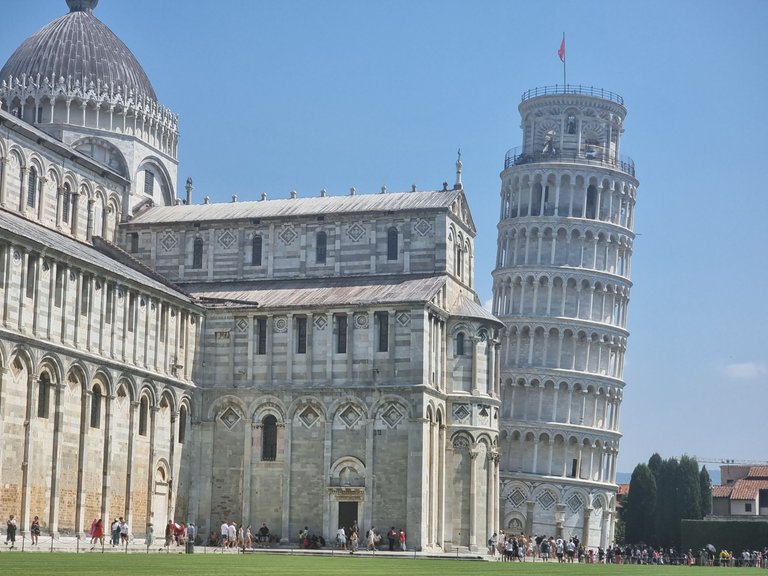
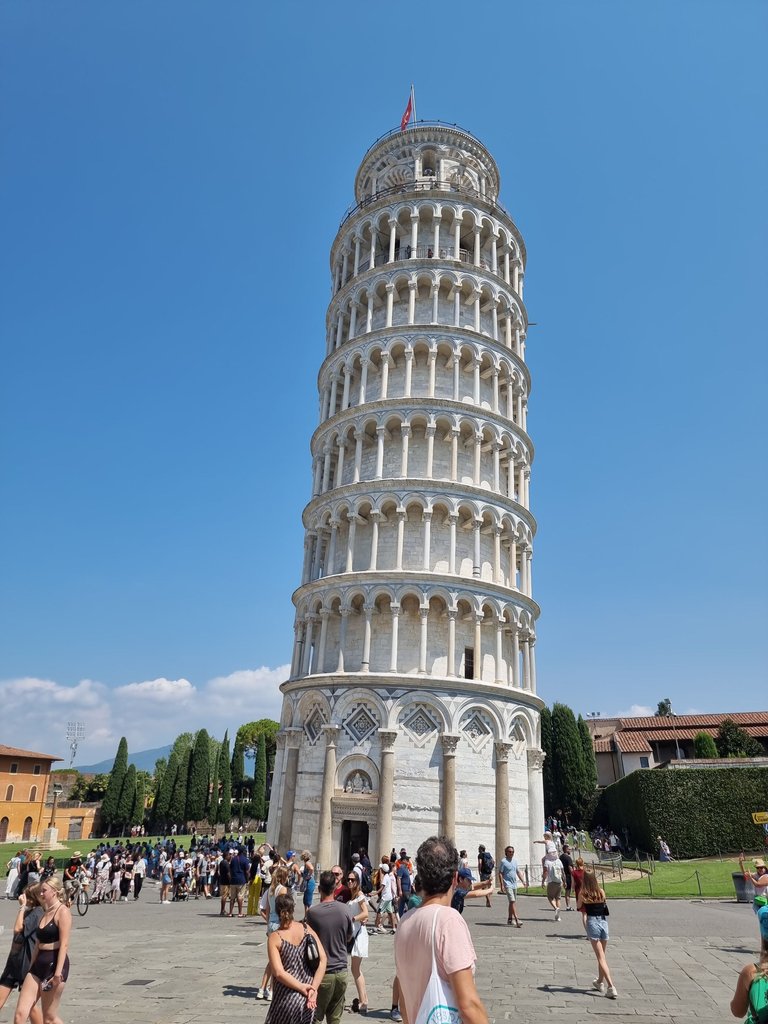

It is truly an architectural wonder. These structures have gone through so much, too. There is a tourist information point just opposite the Cathedral where you can find information about tours but also a lot of free material to learn about the history, importance, and all the different architects and artists whose works are now here.
It is obvious to me that without knowing about such things, the Duomo, or even the Leaning Tower cannot be fully appreciated. So when you do visit, make sure you either do some reading or make an effort to learn about the structures while you are there.
The Pisa Cathedral was by far my favourite. Both because of its remarkable architecture and the history it carries along with it. Just as I had laid my eyes on the Cathedral, a few things immediately stood out to me. Just some time back, I had learned a lot about the history of Italy, the political sphere centuries back, and the inspiration of many popular architects. I had also seen this white and black design in Venice, but some other elements I had seen in the Middle East and was surprised to see in Italy, especially used on the facade of a Cathedral. It is, in many ways, a statement of the fact that differences in cultures and religions should be used to create better things.
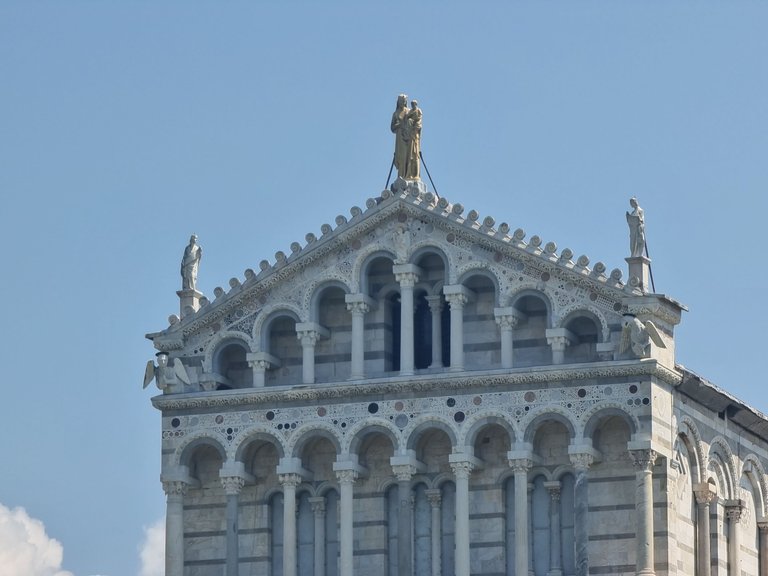
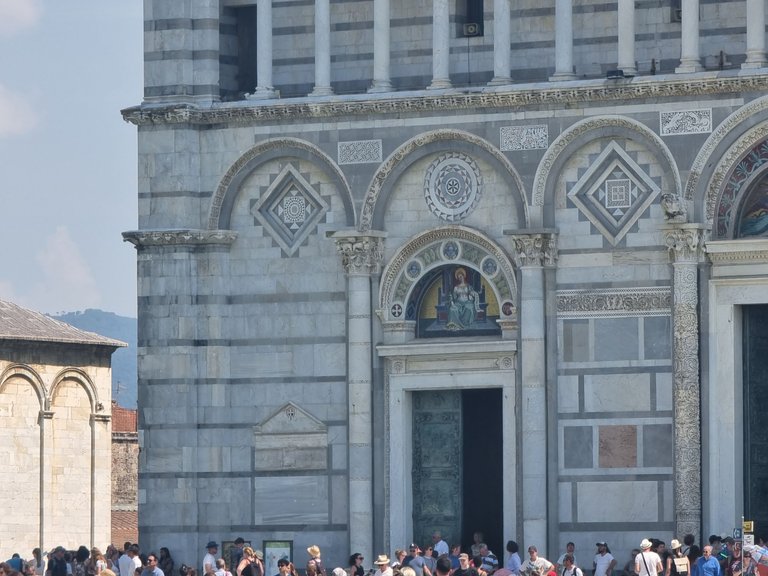
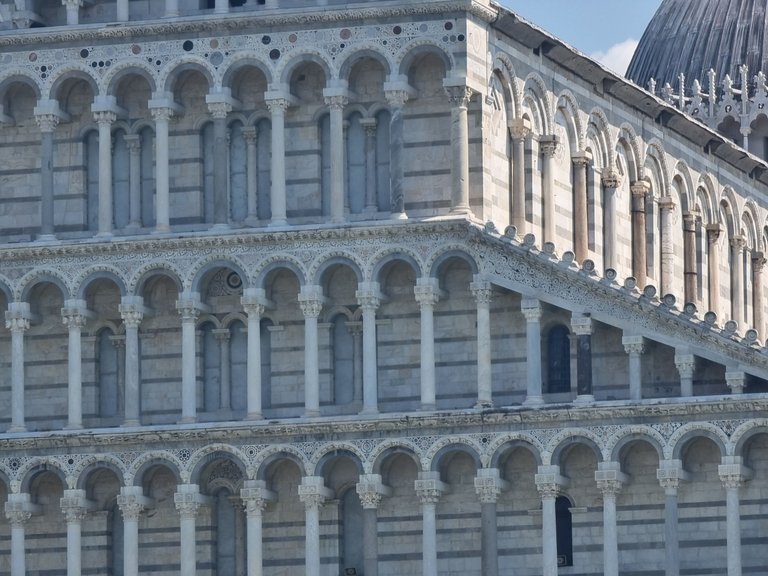
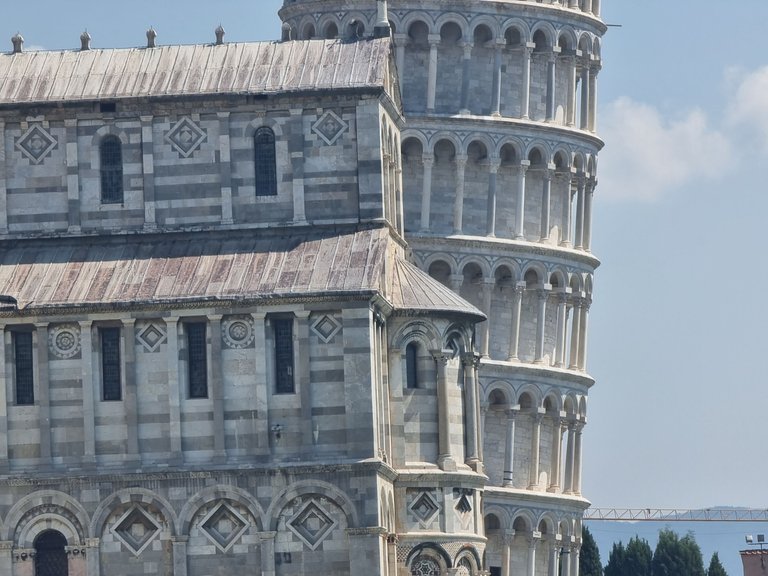
This was once the largest and considered the most beautiful cathedral in Europe, and was probably also the only kind in the world at that time. It is still absolutely remarkable. It was made to be of that stature, noble, rich, and grandiose.
It led to the unique "Pisan Romanesque style" of architecture. The church was designed in the shape of a cross and is still the best work when it comes to Romanesque Architecture. After all these centuries it is still one of the best structures in the world. I wonder if it was looked at like that when it was completed. Talking about completion, that took very long. Not to mention the cathedral burned and a lot of the art inside went into the flames.
Nevertheless, there is still a lot, and I mean. a lot to appreciate. The fresco on the triumphal arch of the church still has original art from decades ago. The one in the centre is that of Mary. Inside, there are more mosaics and even stonework. There are bronze doors in the baptistry and the cathedral. These showcase some of the first Italian bas-reliefs and only certain of them are still "polished" from people touching the faces and heads of figures on the doors.
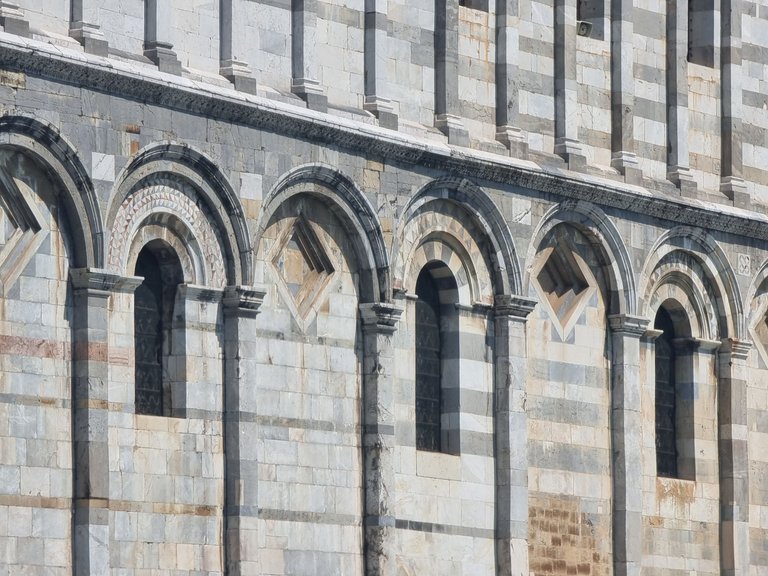
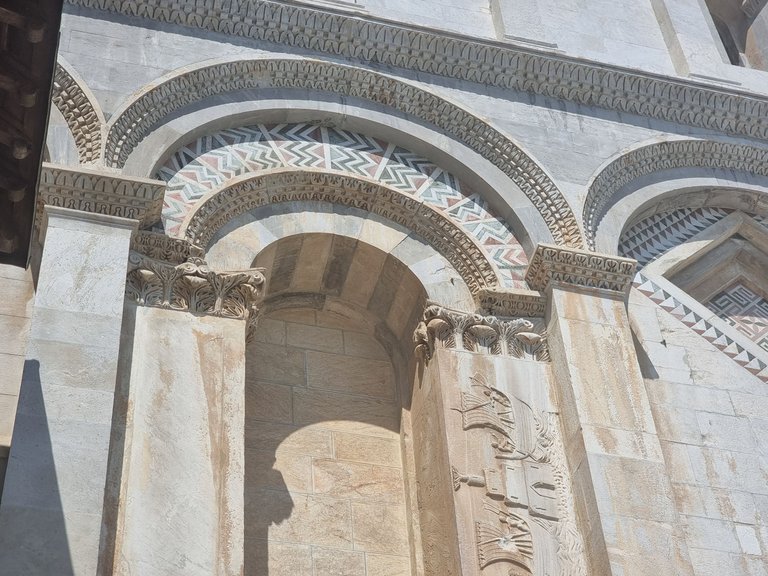
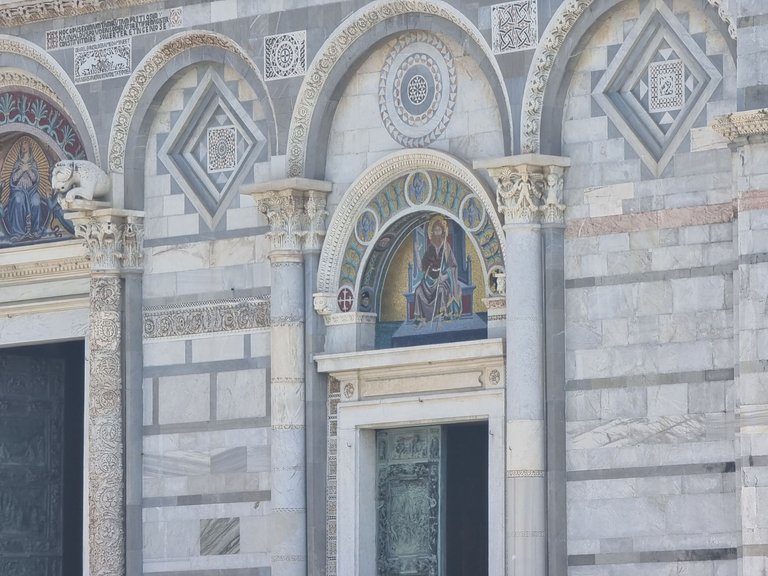
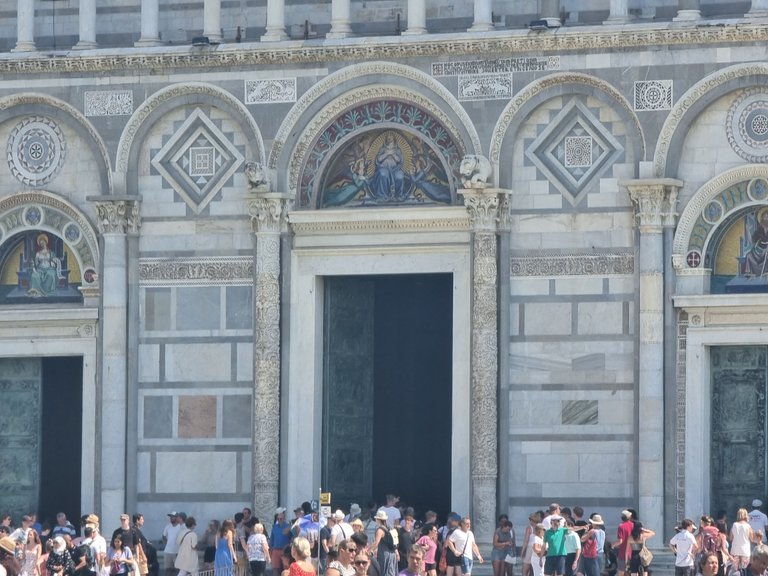

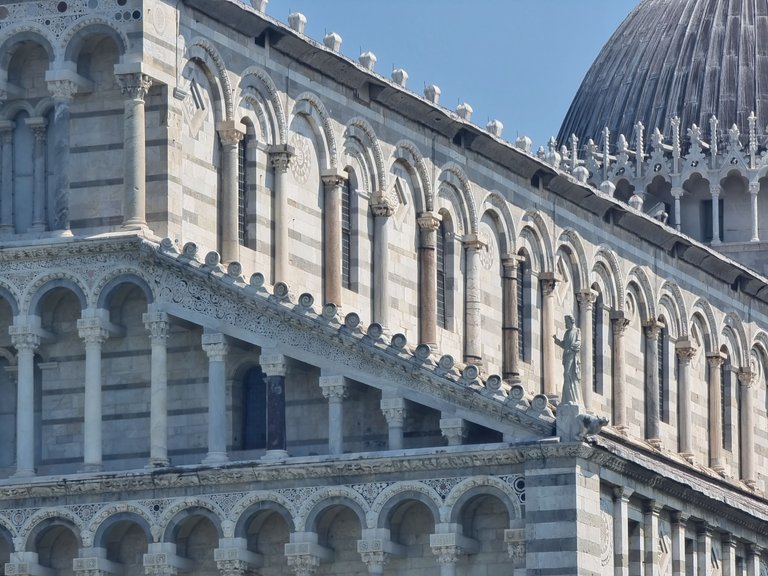
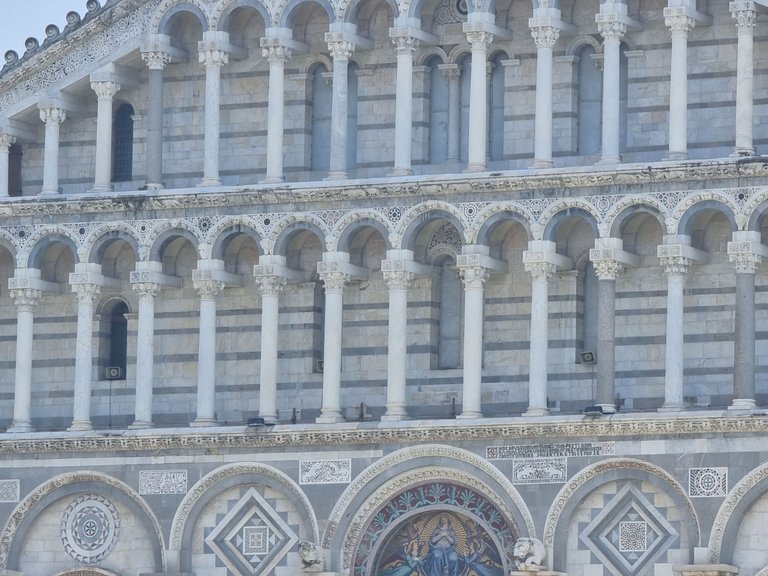
The tickets to enter the cathedral can be bought online or on the spot. There are two different entries, one for people who wish to pray, and the other for general tourist admission.
To think that this cathedral came to life, in this form, out of chance. Well, maybe chance, maybe fate. Since Pisa was never the "rich" part of Italy, the original Cathedral plan was much more modest. However, after winning a very sizable loot from a battle, the plans changed and this elegant Cathedral started taking shape. I have a feeling that there was a little bit of ego in play. The Pisans certainly showed the Venetians that this was the new standard and Pisa should not be looked down upon anymore by Venice.
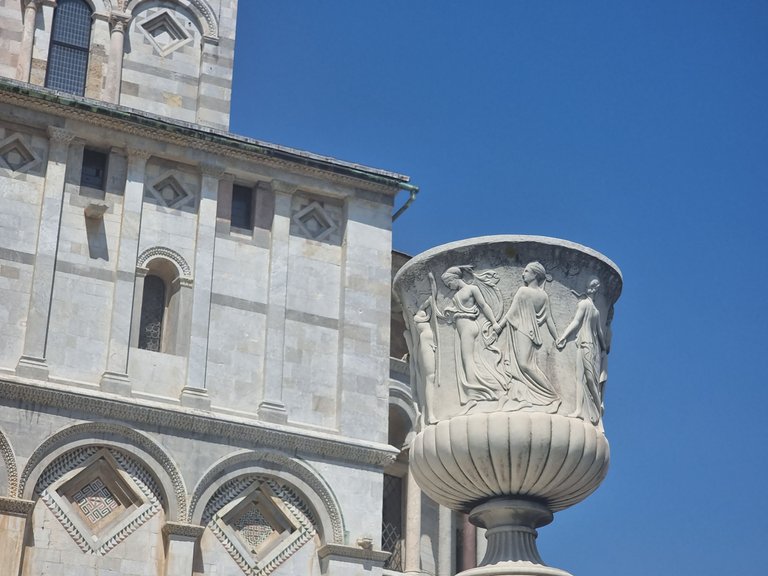
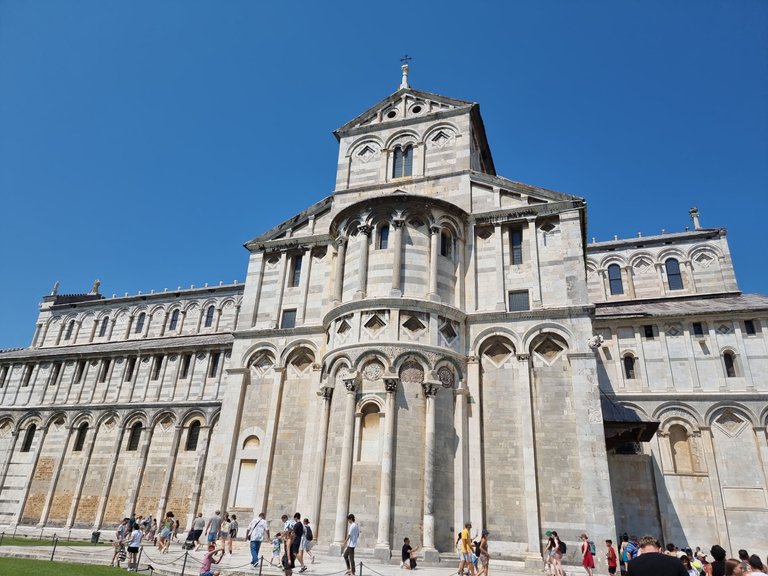
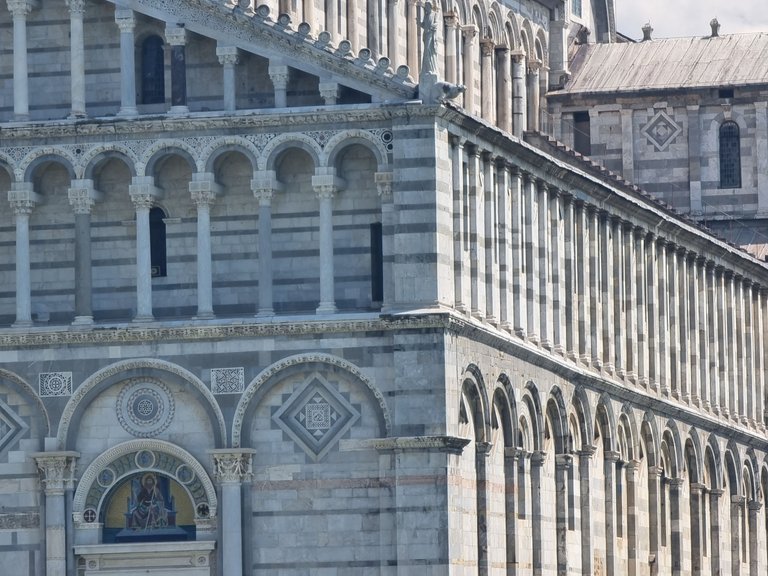
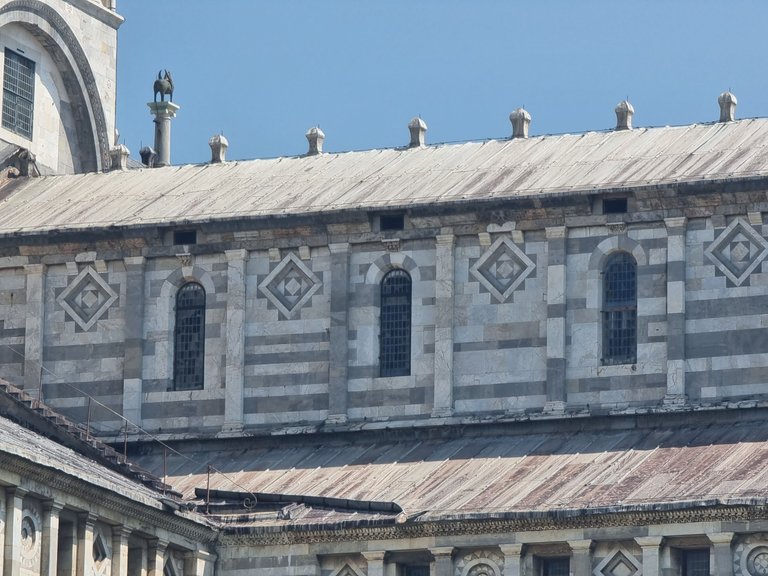
The structures here are mostly made in similar fashion and marble is the main material used. The Leaning Tower, which is the final structure added to the Church complex, is also made in the same fashion and you can also see the same designs on it. Albeit the youngest member of the group, it is by far the most popular structure. I would have gone up the tower but you will see a little later why I decided not to. I found it interesting that the bells, seven originally, were there to depict the major musical scale notes. It is only interesting because I have no clue what those notes are. Hmm. The bells stopped ringing many years ago as the researchers at the time decided the vibrations and sounds could cause the tower more harm.
Just like the cathedral, the tower is also surrounded by plenty of history and remarkable scientific importance. There is also a lot of artwork on the walls of the tower. If you look closely, you can see some of the artwork embossed onto the facade. The floors are also not of equal height. When the tilt became noticeable, there were many attempts and theories on how to correct it, one of the theories implemented was by making one side taller than the other. I am afraid that did not work.
But hey, all the tilting made this a very popular attraction!

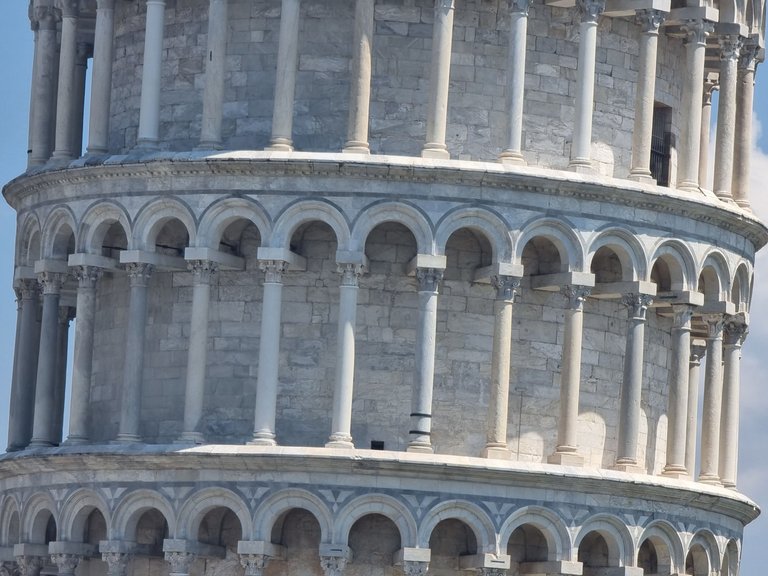
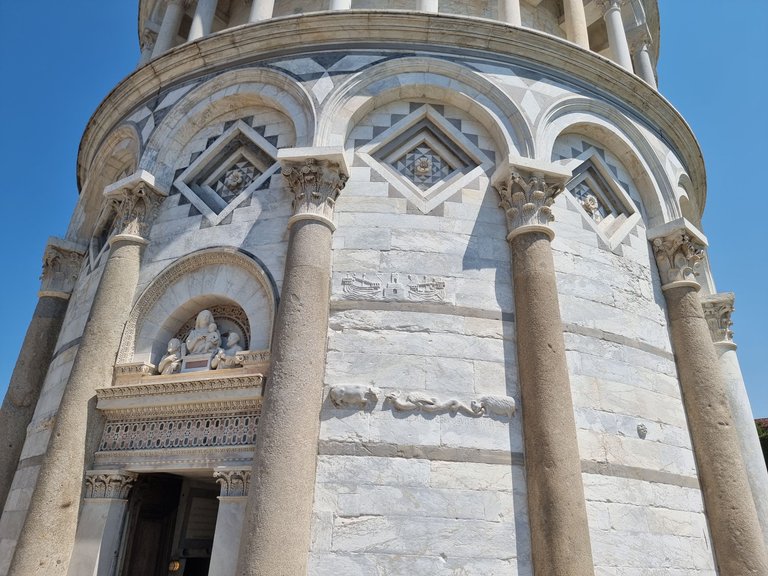
The long line outside under the scorching sun, the 240 something steps, and the fact that only a certain number of people could enter (which meant more waiting) is why I gave up on going inside. It would certainly make for an incredible view, but the main gimmick of this structure is not at the top but at the bottom.
The ground could not hold up the weight of the bell tower, which is why it caved in. It is also true for the cathedral, which has also sunk. The tilt of the bell tower, however, is more uneven and noticeable. This tower was also used during the ww2 as an observation point. What was once used as a tower to ring bells of prayers and hope had to also go through a dark time of evil and hatred.
Anyway, come with me. I took pictures specifically of the bottom because I found it very intriguing. The sinking has stopped, and the tower will remain stable for quite some time. This is why the floor can be tiled and maintained. A lot of weight has been removed, but the structure itself is very heavy.
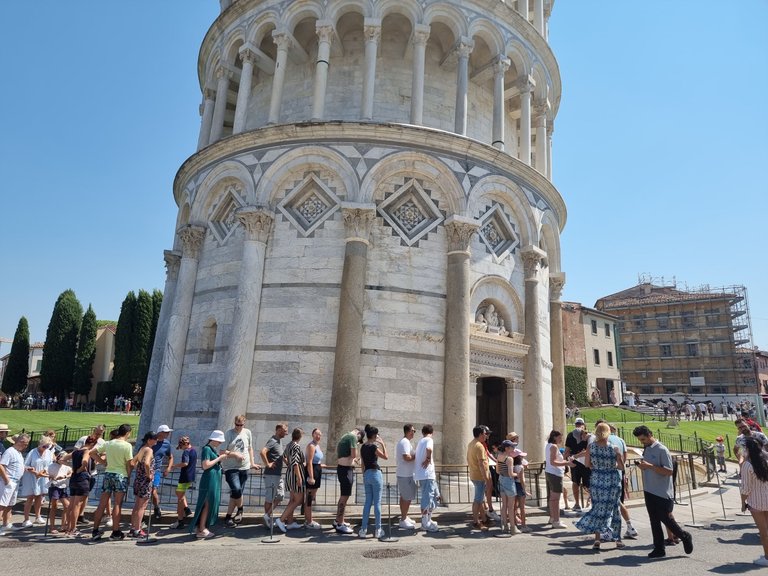

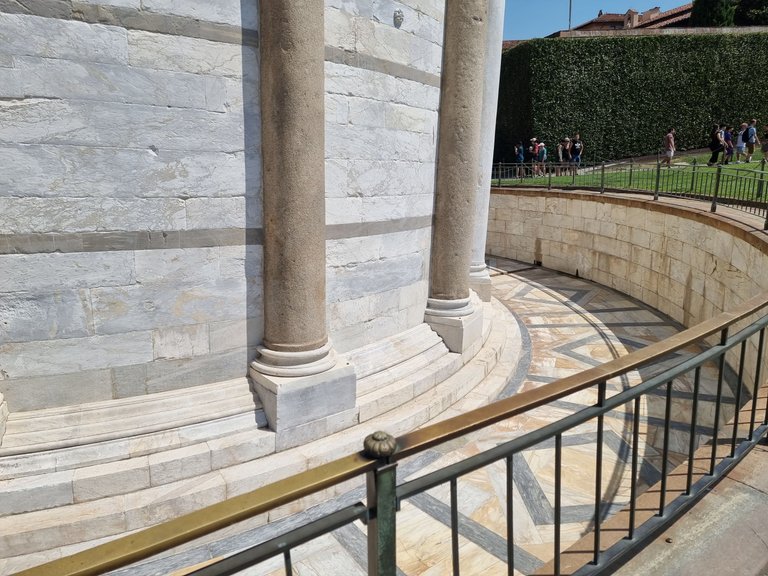
There are a couple of souvenir shops, cafes, and, small businesses opposite the beautiful cathedral and Leaning Tower. It is hard to get a spot, but if you wait long enough, something will open up. It was very hot so I very much appreciated the shade and the cold drinks. I also bought a slushie, but believe me, it is not worth it.
This was really fun. I could stare at the beautiful structures and appreciate them from here. I also got a few pictures of myself, because why would I miss this chance, right? A lot of street vendors come by this side of the attraction to try and sell you belts, bracelets, bags, and whatnot. There are also a few hustlers, but the most friendly kind. One "no" and they are on their way. Speaking of friendliness, I have never met more friendly hospitality workers in a tourist area than the guys working in this cafe. All in all, made for a wonderful pitstop.
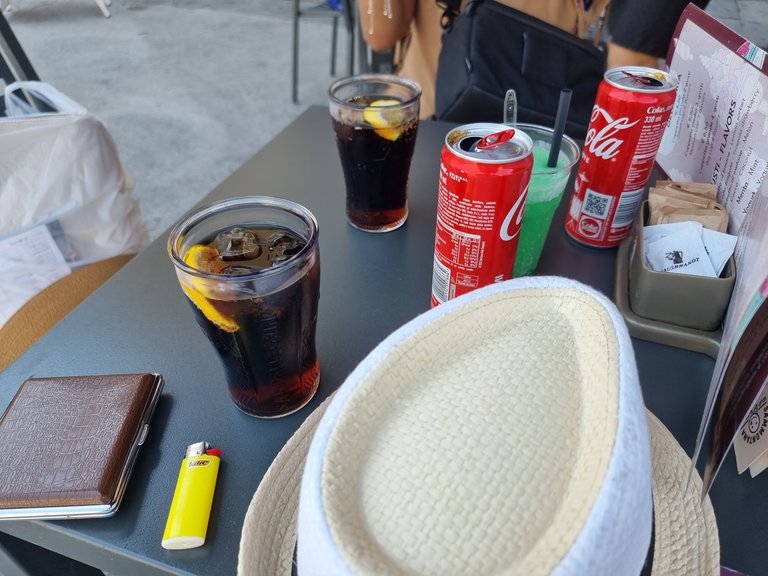
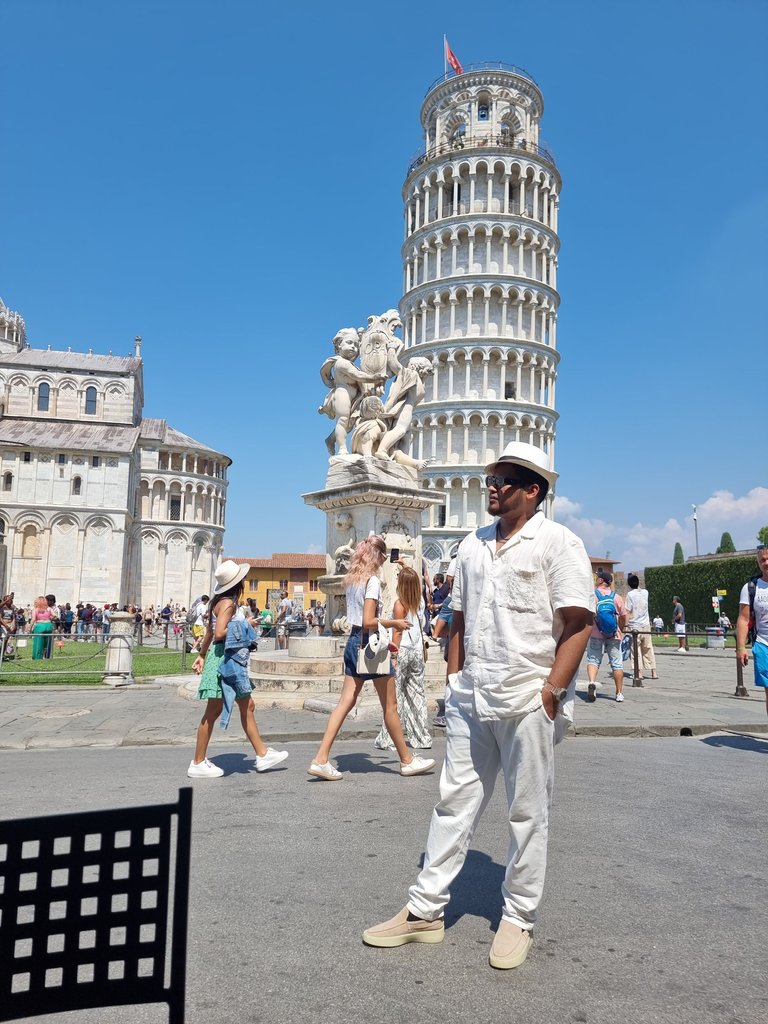
When you keep walking down, away from the tower and into the street of the cafe, you will see these beautiful orange buildings. It leads out of the landmark and into the city. There are restaurants, a university hospital, shops, and so on.
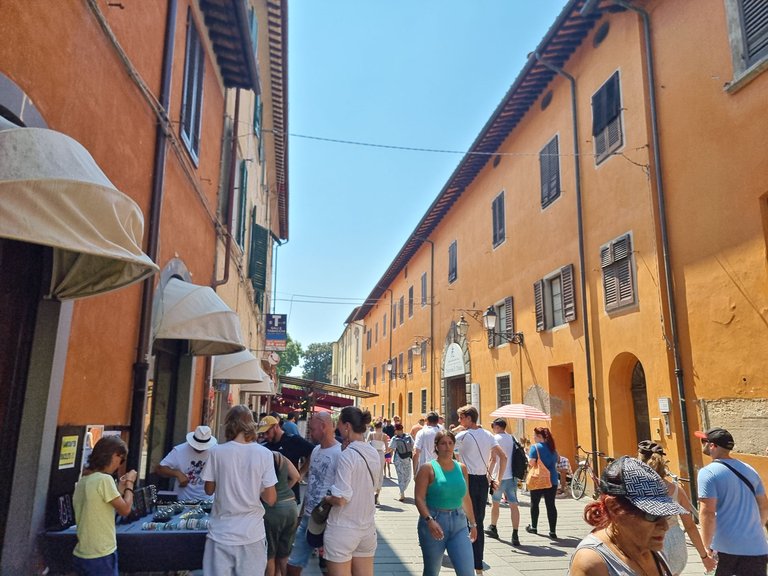


But I wasn't heading that way. I took a quick gander at a souvenir shop and then headed to the baptistery on the way out towards the parking.
It is not hard to notice the similarity in style and design and the difference in details and craftsmanship due to changing times. The cathedral is, by far, the most elegant and detailed, both inside and out. The baptistry comes second, and the youngest addition, the bell tower, is the "simplest". The baptistry, however, is the only structure that has busts and figures on its facade. There are similar arches, but much more work has been done on these arches. This was because the time was different and the lead designer too.
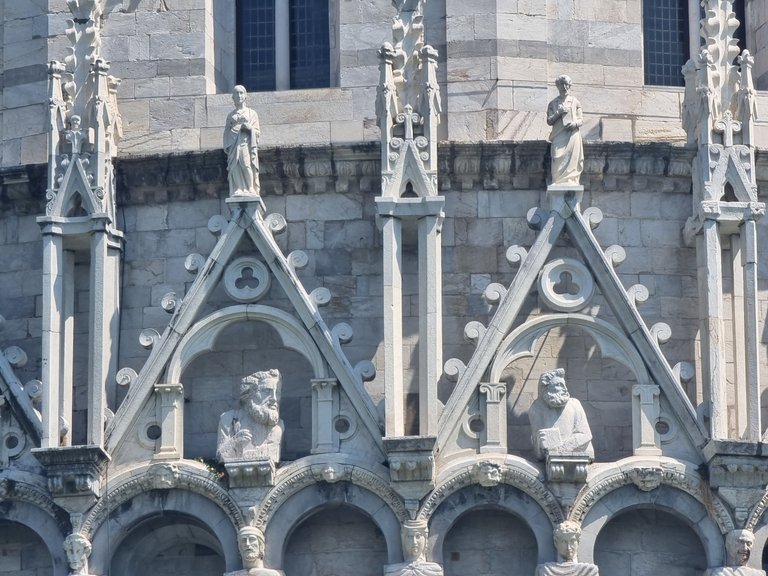
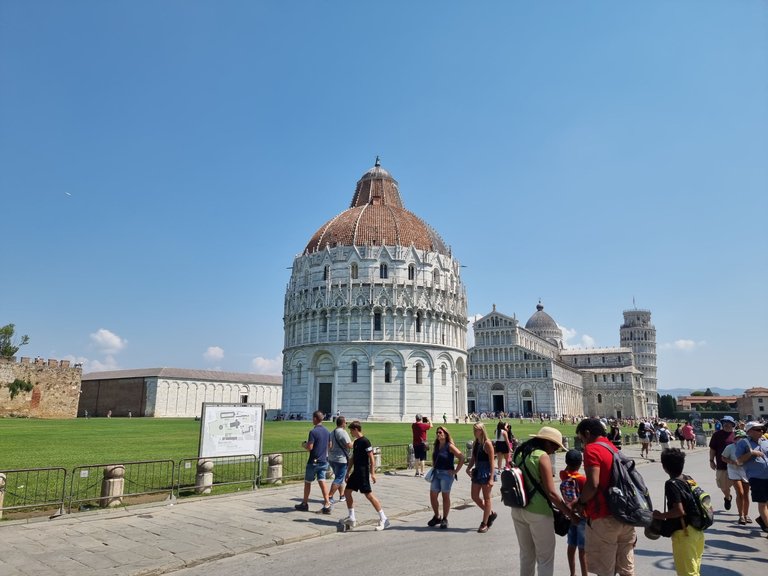
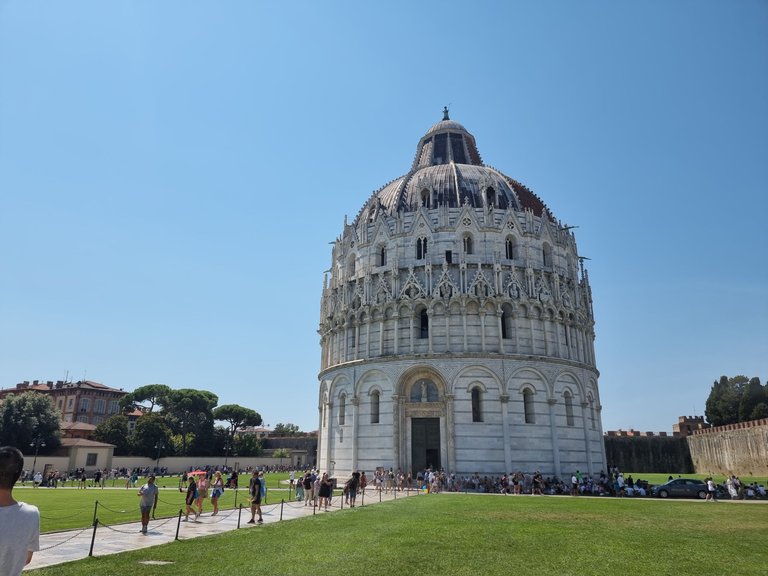
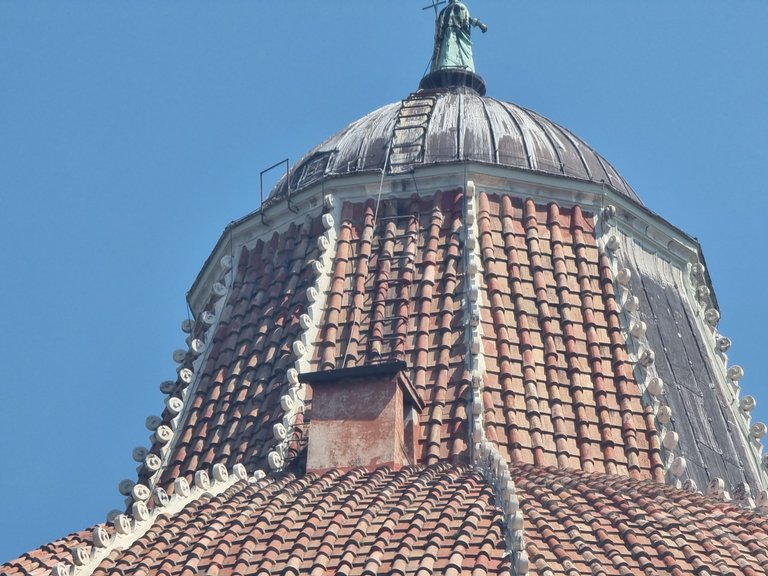
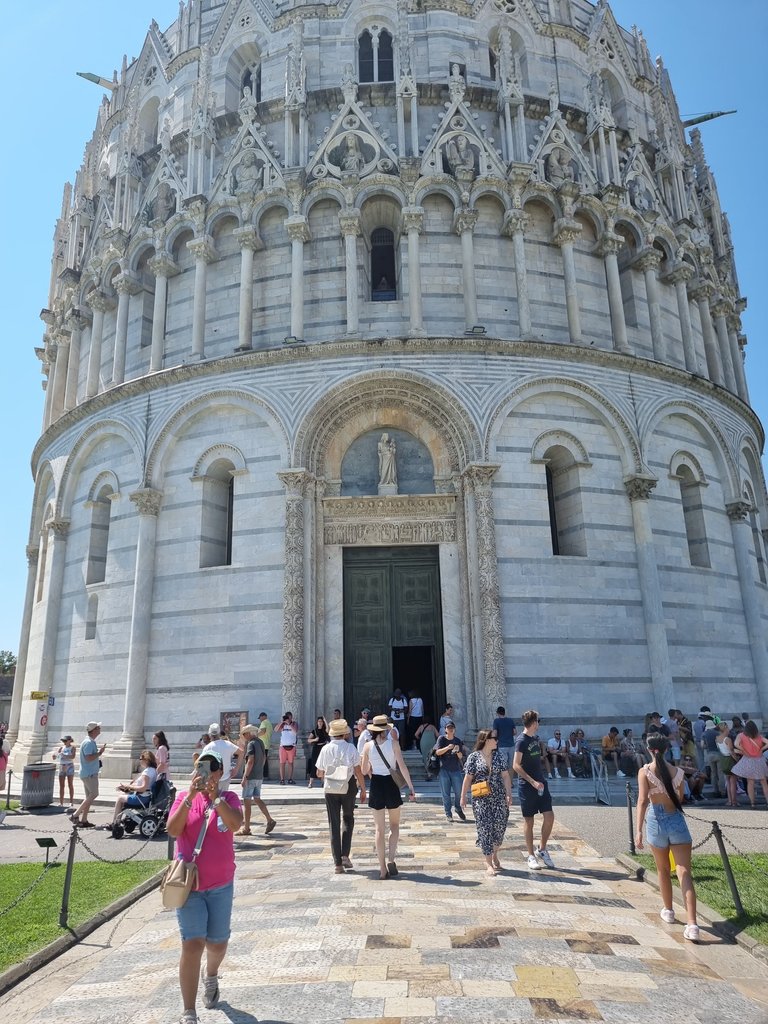
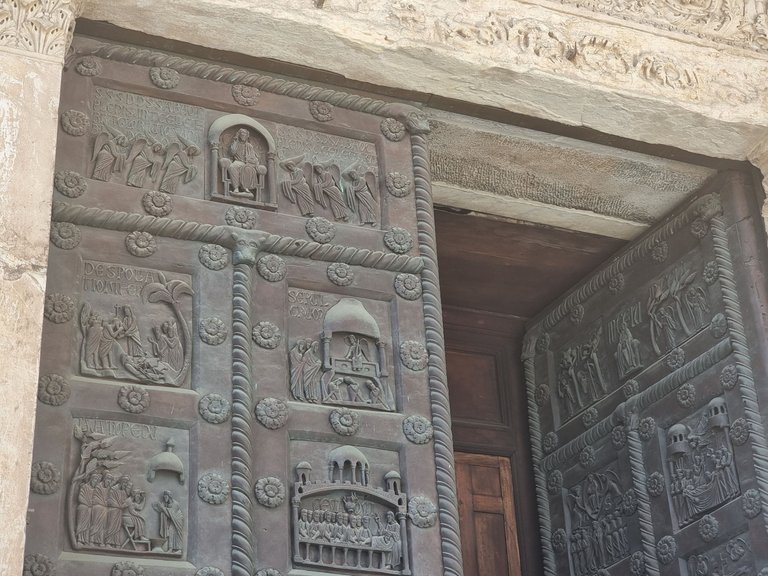
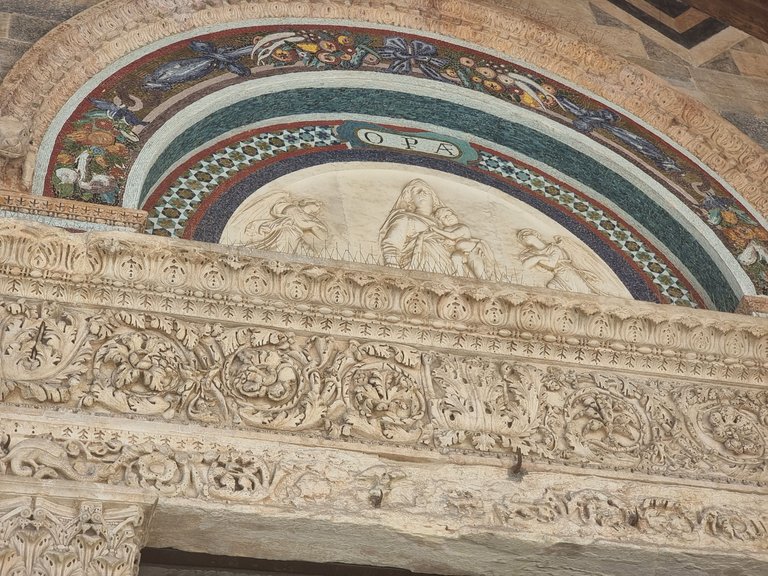
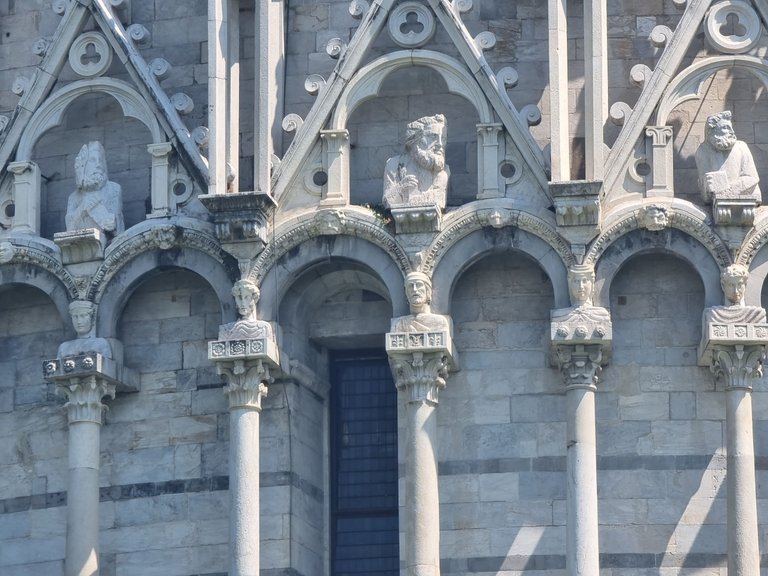
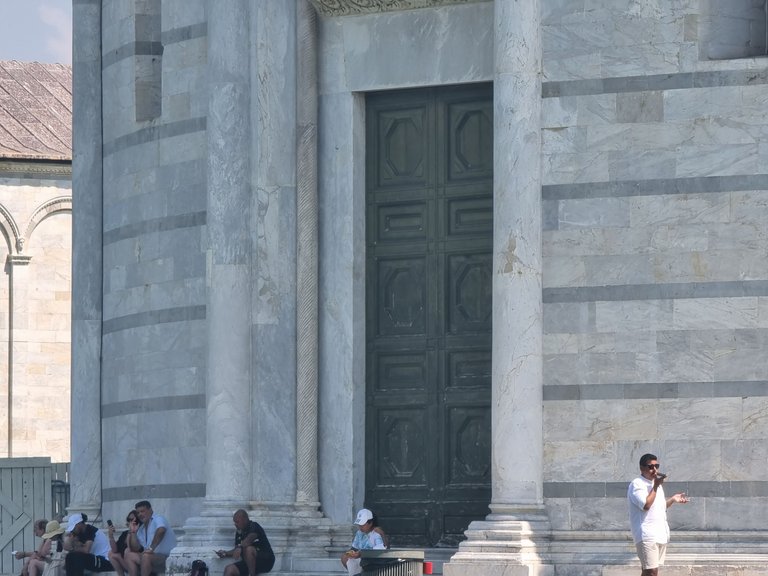
It shows clear signs of Gothic style architecture. It is a transition from Romanesque to Gothic. It got me thinking. I know I love brutalism when it comes to houses, but when it came to cathedrals I always loved Gothic, but I think after the visit to Pisa, Pisan ROmanesque has been making its way to the top of my list.

Affiliate links
Rising Star
Exode
Huobi
Appics
Splinterlands
Actifit
Binance
Ionomy
Cryptex
